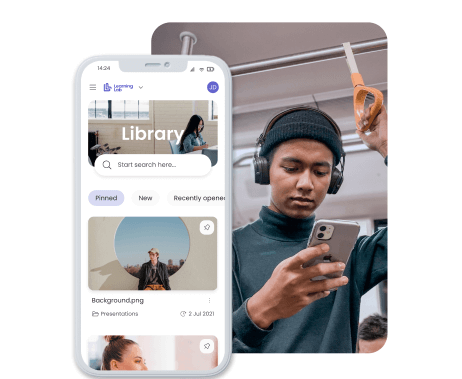Ultimate Guide to successful Online Retail Training
Mastering the Art of Online Retail Training: A Comprehensive Guide to Success.
In the dynamic realm of online retail, staying ahead demands more than just a knack for sales; it requires a finely tuned understanding of the digital landscape and a commitment to continuous learning.
As the digital marketplace continues to evolve, so too must the skills of those who navigate its corridors. Enter online retail training: a vital resource for empowering individuals with the expertise needed to thrive in this ever-changing ecosystem.
Understanding the learners and their unique needs lies at the heart of effective online retail training. Whether it's equipping new recruits with fundamental knowledge or upskilling seasoned professionals to adapt to emerging trends, tailoring the learning experience to meet the diverse demands of today's retail workforce is essential.
This comprehensive guide delves into the key components necessary for crafting impactful online retail training programs. From designing clear objectives that align with organisational goals to harnessing the power of multimedia to engage and educate, each facet plays a crucial role in cultivating a skilled and adaptable retail workforce.
In an era where branding reigns supreme, the choice of Learning Management System (LMS) becomes paramount. Working with a highly branded LMS not only reinforces organisational identity but also enhances the overall learning experience, fostering a sense of cohesion and professionalism.
Join us on a journey through the intricacies of online retail training as we explore best practices, innovative strategies, and invaluable insights to empower your team for success in the digital marketplace.
Analyse your employees needs and expectations.
Before launching into the development of an online retail training strategy, it is crucial to first conduct a comprehensive survey and hold detailed interviews with teams across the organization.
This preliminary step is pivotal as it helps to gather essential insights into the specific needs and expectations of various stakeholders.
Understanding these aspects ensures that the training content is not only relevant and targeted but also aligns with the overall goals of the organization. Such a thorough preparatory phase supports the creation of a strategy that is well-informed and responsive to the actual requirements of the workforce, thereby increasing the likelihood of its success and effectiveness.
What is an effective training for online retail?
An effective training program for online retail is meticulously designed to provide immediate answers and necessary materials to a team that requires them.
It's not just about delivering content, but about crafting it into the most appropriate multimedia formats—whether videos, interactive modules, or downloadable guides—to enhance learning and retention.
The information is structured to be communicated with clarity and rapidity, ensuring that team members can quickly grasp complex concepts and apply them effectively in their roles.
The program should be dynamic, capable of evolving with changing market trends and technologies, and include mechanisms for feedback to continuously improve the training process. This approach ensures that the training remains relevant and valuable, empowering employees to excel in the fast-paced world of online retail.
Key components of effective online retail training programs
Effective online retail training programs are built on several key components that ensure they are comprehensive and impactful.
They must offer customised content that is tailored to the specific needs of the business and its employees, addressing unique challenges and goals.
Interactive learning experiences are also crucial, as they engage learners more deeply and help to reinforce knowledge through practical application. This might include simulations, quizzes, and real-time problem-solving exercises.
essential element is accessibility, allowing employees to access training materials at any time and from any location, which is particularly important in a dynamic retail environment.
Continuous assessment and feedback mechanisms should be integrated to monitor progress and identify areas needing improvement, facilitating a loop of constant learning and development.
An effective program incorporates up-to-date technology and trends, keeping the content relevant to the latest in e-commerce advancements and consumer behaviour, ensuring that team members stay competitive in a rapidly evolving industry.
Highlight the benefits of investing in training for retail staff
Investing in training for retail staff offers numerous benefits, significantly enhancing both employee performance and customer satisfaction.
Utilising a Learning Management System (LMS) transforms training into a comprehensive knowledge platform. This learning platform not only delivers job aids and continuous updates on product knowledge but also serves as a dynamic tool for ongoing education.
An LMS ensures that staff are always current with the latest products and market trends, crucial for delivering exceptional service.
An LMS provides a centralised hub for discussion and collaboration, allowing employees to share insights and solutions, thereby fostering a collaborative work environment. This interaction enhances problem-solving skills and promotes a team-oriented culture.
Training through an LMS is an excellent opportunity for a brand exercise, as it helps inculcate the company's values into the staff.
By consistently aligning training content with the brand's core values, employees become effective brand ambassadors to customers.
This alignment not only boosts employee engagement by connecting their roles to the company's broader goals but also enhances the overall customer experience, reflecting a well-informed and value-driven workforce.
Design clear Objectives and Goals
Designing clear objectives and goals for online retail training is paramount to the success of the program, as it provides direction and purpose.
Clear objectives ensure that training sessions are focused and relevant, directly contributing to the strategic needs of the business. To define these goals effectively, they should be specific, measurable, achievable, relevant, and time-bound (SMART). This framework helps in setting expectations that can be quantitatively tracked and evaluated.
For instance, common training objectives for online retail might include increasing sales conversion rates by a specific percentage, reducing checkout abandonment rates, enhancing customer service skills to improve customer satisfaction scores, or mastering a new inventory management system within a quarter.
Each of these goals is targeted towards boosting operational efficiency and enhancing customer interaction, crucial factors in the competitive landscape of online retail. By meticulously crafting and adhering to these objectives, retail businesses can ensure that their training programs yield tangible, beneficial results.
Designing the Online Training Program
Designing an effective online retail training program involves integrating several key elements that cater to the modern learner's preferences and technological advancements.
The program should prioritise short, digestible content that is mobile-first, acknowledging the increasing reliance on smartphones for learning. Visual and video-based materials are essential, as they can significantly enhance understanding and retention of information.
Incorporating crafted activities that encourage real-world application and adopting nano and micro-learning approaches ensure that learning is both engaging and manageable in bite-sized pieces.
Customization and adaptability of the training content are critical. Each retail team has unique needs based on their roles, experiences, and the specific challenges they face. The training should, therefore, be adaptable to different skill levels and learning speeds, as well as flexible enough to update swiftly as products and technologies evolve.
When selecting the right training methods and technologies, it's crucial to consider the user experience and the technological capabilities of the staff. Opt for intuitive platforms that are easy to navigate and accessible across multiple devices.
Leveraging data analytics tools within these platforms can help in monitoring the effectiveness of the training and in making necessary adjustments to improve learning outcomes. By thoughtfully combining these elements, an online retail training program can be both effective and enjoyable for participants, leading to better performance and greater job satisfaction.
Explain how to create engaging and relevant training content for online retail staff.
Creating engaging and relevant training content for online retail staff requires a strategic approach that resonates with the modern learner.
It’s essential to recognise the significance of the brand within the training modules.
This means incorporating premium design elements that reflect the brand’s identity and ethos, ensuring that the training not only educates but also reinforces brand loyalty and culture. Activities should be interactive and foster engagement, such as through chats and discussions that facilitate real-time feedback and collaborative learning experiences.
Given the ubiquitous nature of mobile devices, designing content that is mobile-friendly is non-negotiable. This ensures that learners can access training anytime and from anywhere, enhancing convenience and increasing learning opportunities. Emphasising audio and video-based learning caters to diverse learning preferences and can help in demonstrating complex retail tasks more vividly, making the learning process more intuitive and memorable.
Incorporating social and peer-to-peer learning elements is vital. This approach leverages the communal knowledge and experiences of the group, allowing staff to learn from each other through shared insights and practical advice.
By creating a collaborative learning environment, employees not only acquire skills and knowledge more effectively but also feel more connected and engaged with their peers. This holistic approach to training content creation ensures that it is not only educational but also deeply engaging and aligned with the staff's daily realities and the strategic goals of the retail brand.
Offer various content formats, such as videos, interactive modules, and quizzes.
The human brain is naturally designed to forget information that isn't reinforced, making it crucial for training programs to deliver content in varied and engaging formats that create memorable learning experiences.
Offering a diverse array of content formats such as video quizzes, interactive videos, video assessments, and interactive modules, enhances the engagement and retention of information by catering to different learning styles and preferences.
For instance, video content can illustrate complex retail scenarios that require visualisation, while interactive modules can simulate real-life challenges that need active problem-solving. Live sessions add a dynamic element of real-time interaction and personal connection, further enriching the learning experience.
Incorporating emotional elements through these rich media experiences makes the learning more impactful. Emotions play a key role in memory retention; therefore, creating training content that evokes feelings, whether through compelling storytelling, relatable scenarios, or interactive engagement can significantly enhance the likelihood of retaining new information.
This approach not only helps in embedding knowledge more deeply but also makes the learning process enjoyable and meaningful, encouraging continuous engagement and curiosity among online retail staff.
Benefits of activity-based learning
Activity-based learning in online retail training is highly beneficial as it allows employees to apply theoretical knowledge in practical, real-world scenarios, thereby reinforcing learning and improving problem-solving skills.
This method encourages active participation, which increases engagement and retention, helping staff to remember key concepts more effectively.
It fosters a collaborative environment where employees can learn from each other's experiences and insights, boosting teamwork and enhancing the overall performance of the retail team.
Employee Engagement and Participation
To enhance employee engagement and participation in online retail training, it's crucial to implement strategies that make learning interactive and rewarding.
Encouraging a culture of continuous learning is vital; it should be ingrained as a core aspect of the company ethos, promoting an environment where ongoing development is valued and supported. One effective strategy is to integrate social and peer-to-peer learning opportunities, which not only enrich the training process but also strengthen team bonds. This approach leverages the diverse experiences and skills within the team, allowing employees to learn from one another and share best practices in a collaborative setting.
It's essential to actively encourage participation and feedback from retail staff. This can be achieved by designing training sessions that include interactive elements like polls, Q&A sessions, and group discussions.
Providing learning platforms where employees can voice their opinions and suggestions about the training content fosters a sense of ownership and inclusion. Regular feedback channels, both formal and informal, should be established to gather insights on the training's effectiveness and areas for improvement.
By creating an engaging, participative, and responsive training environment, retail businesses can significantly boost learning outcomes and employee satisfaction.
Assessment and Evaluation
Conducting regular assessments and evaluations is essential in measuring the effectiveness of online retail training programs.
These evaluations help determine whether employees are effectively absorbing the content and applying their new skills and knowledge in practical settings.
Methods for assessing employee knowledge and skills can vary widely, from formal testing and quizzes to more interactive formats like simulations or practical demonstrations that mirror real-life scenarios. Each method provides valuable insights into different aspects of learning outcomes and employee capabilities.
To ensure continuous improvement in training initiatives, it is crucial to collect feedback systematically. This can be accomplished through surveys, focus groups, or individual interviews, providing a learning platform for employees to express their views on the training's relevance and applicability.
Analysing this feedback allows trainers to identify strengths and weaknesses in the program and make necessary adjustments. By regularly updating training content and methodology based on evaluation results, businesses can keep their training programs dynamic and responsive to both the needs of their employees and the demands of the market, ultimately leading to a more competent and confident workforce.
Adopt Blended Learning for Retail Training
Adopting blended learning for retail training offers a versatile approach that combines online educational materials with hands-on, in-store training experiences.
This method allows the learning platform and course materials to serve as foundational support, preparing employees with essential knowledge before they apply these concepts directly on the shop floor.
Blended learning ensures a well-rounded training experience, reinforcing theoretical online lessons with practical, real-world applications, which enhances learning retention and equips retail staff with the skills needed to excel in a dynamic retail environment.
Measuring Success and ROI
Measuring the success of online retail training programs involves tracking specific key performance indicators (KPIs) such as employee competency rates, completion times, and the application of learned skills to real-world scenarios.
These KPIs help gauge the effectiveness of the training by assessing how well employees can integrate new knowledge into their daily responsibilities.
To calculate the return on investment (ROI) of training initiatives, strategies like comparing pre- and post-training performance metrics, analysing changes in sales figures, and measuring improvements in customer service quality are essential.
By evaluating these metrics, businesses can determine the financial and operational impacts of their training investments, ensuring they align with overall business objectives and contribute to sustained growth.
Continuous Improvement
Continuous improvement in the design process and content of online retail training is crucial to ensure that it remains relevant and effective in a rapidly evolving retail landscape.
Gathering regular feedback from participants through surveys, focus groups, and performance analytics is essential for making iterative improvements, allowing trainers to fine-tune content and delivery methods to better meet the needs of learners.
Ongoing training plays a vital role in adapting to changes in the market, consumer behaviour, and technology, ensuring that retail staff are always equipped with the latest knowledge and skills to excel in their roles and drive business success.
Conclusion
In conclusion, effective online retail training is an indispensable tool for any business looking to thrive in the competitive retail market.
Through the strategic design of training content, the incorporation of blended learning models, and the application of diverse, engaging formats such as video and peer-to-peer learning, organisations can significantly enhance employee skills and engagement.
Regular assessments and the continuous improvement of training content ensure that programs stay relevant and effective, adapting to both technological advancements and shifts in consumer behaviour.
The importance of such training cannot be overstated, as it directly contributes to the operational efficiency and customer service excellence that drive business success.
By implementing the strategies and tips discussed, retailers can cultivate a knowledgeable, versatile workforce capable of navigating the challenges of the modern retail environment and seizing opportunities for growth and innovation.











